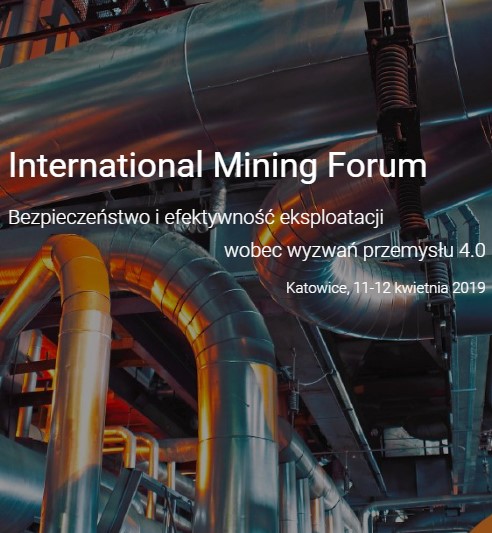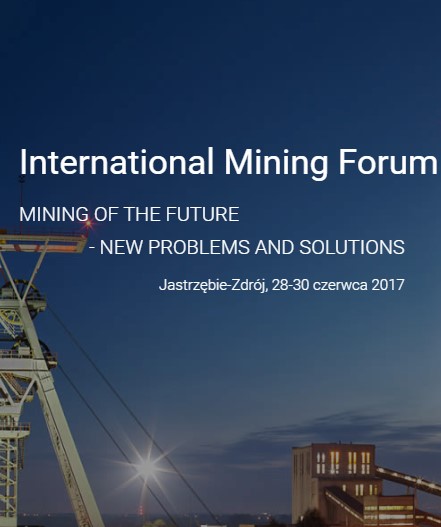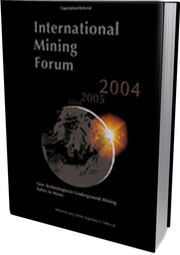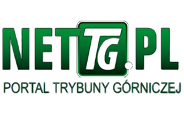An Assessment of Prospective Reserves for Underground Coal Gasification in Poland
Barbara Białecka
Central Mining Institute, Katowice, Poland
ABSTRACT: One of prospective methods of coal utilization, especially in case of coal resources which are not mineable by means of conventional methods, is underground coal gasification (UCG). This technology allows to recover coal energy ”in situ” and thus avoid the health and safety risks related to people which are inseparable from traditional coal extraction techniques.
Prerequisites for the application of hard coal gasification technology include:
- selection of criteria that determine suitability of coal beds for gasification;
- assessment, based on the assumed criteria, of prospective beds for underground gasification;
- specification of hard coal and lignite resources which can constitute the raw material basis for the gasification process.
An analysis and classification of Polish coal resources according to these criteria constitutes the subject of this paper.
Structure and Technological Elements of Information System of Mine Based on the Control of a Condition of Rock Mass
Volodymyr I. Bondarenko, Volodymyr I. Buzylo, Vadym V. Fomichov
National Mining University, Dnipropetrovs’k, Ukraine
ABSTRACT: The technique of formation of information system of mine based on the account of a geomechanical condition of rock mass of the coal-mining enterprise containing underground construction is presented.
KEYWORDS: Information system, a rock mass, mine, production management, geomechanics
Synthetic Stowing of Rockmass at Borehole Underground Coal Gasification (BUCG)
Volodymyr I. Bondarenko, Volodymyr S. Falshtynskiy, Roman O. Dychkovskiy
National Mining University, Dnipropetrovs’k, Ukraine
ABSTRACT: In the paper it is considered the mechanism of cavities forming in the rockmass. The geometrical parameters of their distribution are calculated. The parameters of the goaf injection stowing under gas generator are defined. Economical values of gas generator usage are presented.
KEYWORDS: Underground coal gasification, technological parameters, components of pressure
Physicochemical Processes Hydrate Creation in Methaneplentiful Carboniferous Deposits and Their Outburst Hazard
Volodymyr I. Bondarenko, Yurij B. Griadushchij, Oleksandr P. Mossur
National Mining University, Dnipropetrovs’k, Ukraine
ABSTRACT: The analysis thermobaric conditions for hydrate creating are reduced at effect natural and man-caused factors. Necessity of the account of a possibility of formation of hydrates and their effect on outburst hazard of carbons and adjacent stratum are justified.
KEYWORDS: Hydrates, natural and man-caused factors, components of pressure, rockmass, thermobaric condition
Methane Hazard Predictions in Underground Coal Mining
Marek Borowski, Nikodem Szlązak, Dariusz Obracaj
AGH - University of Science & Technology, Krakow, Poland
ABSTRACT: Methane emissions present a major hazard during underground coal mining. The knowledge of the emission levels is required to plan the mining operations, to select the mining me-thod and the degasification strategy. Methane emission levels can be determined from reliable fo-recasts. Prediction methods involve a number of models which vary in the degree of precision. The study outlines the empirical methods, followed by a prognosis of methane emissions based on the geomechanical model. Simulation methods and computer programs are presented that are used to evaluate the methane hazard. Prediction methods used in Poland are reviewed in further sections. One has to bear in mind, however, that these methods may not be effective in deep mines. Finally, the forecasting method is presented that is based on neural networks.
The Exploitation Depth and Bump Hazard in the Mines of the Upper Silesian Coal Basin
Mirosława Bukowska
Central Mining Institute, Katowice, Poland
e-mail: m.bukowska@gig.katowice.pl
ABSTRACT: Bump hazard is conditioned by three groups of factors. One of them is a group of natural factors (geological). They result from a diastrofic and sedimental development of a carboniferous coalfield of the Upper Silesian Coal Basin. Bump hazard in the USCB has changed over the years - both in the aspect of number of bumps as well as their intensity. The above mentioned results from changing geological and mine conditions, therein most of all from the permanent incre-ase of the exploitation depth (currently about 8 meters per year) and the necessity to exploit the residual parts of deposits. It results also from motor requirements of coal mines which have intensified the exploitation. This subsequently is conductive to the intensity of the dangerous geodynamic occurrences in a rock mass. Over the last years the number of bumps in coal mines of the Upper Si-lesian Coal basin has decreased significantly as a result, among other things, of the exploitation te-chnology improvement as well as bump prevention. Currently the highest number of bumps occurs in the range of depth between 700 and 770 meters what results from the intensity of coal exploitation at this range of depth. The highest number of bumps is still registered in the group of beds 500. The depth of exploitation, as a factor indirectly influencing the bump hazard, is considered in the methods of the assessment of rock mass susceptibility to bumps. The example is the geological and geomechanical method of the assessment of rock mass susceptibility to bumps GEO (Bukowska red. 2009).
KEYWORDS: Mining, geomechanics, rock mass, depth, bump, bumps hazard
Possibility of Application of the Mechanized Coal Excavation in the Mines with Underground Exploitation in Republic of Serbia
Miodrag Denić
JP za PEU, Resavica, Republic of Serbia
e-mail: miodrag.denic@yahoo.com
Zlatko Dragosavljević
JP za PEU, Resavica, Republic of Serbia
Slobodan Kokerić
JP za PEU, RMU “Soko“ Sokobanja, Republic of Serbia
e-mail: skokeric@sezampro. rs
ABSTRACT: The primary goal of underground coal mining is the increase of production. Room-pillars methods are used for coal excavation in the mines with underground coal exploitation in Serbia today, so if the increase of production is to be achieved it is necessary to introduce mecha-nized excavation in mines in which mining-geological conditions allow it, using long-wall methods of excavation.
In some of our coal mines at the proper time there was used a long-wall method of excavation (RMU “Rembas” - Resavica, RMU “Bogovina” - Bogovina), so there are certain experiences which are very significant for the future selection of MHP.
This paper includes the proposal of introducing the mechanized excavation in the mines in which mining-geological circumstances allow it.
KEYWORDS: Exploitation, mechanized excavation, shaft, long-wall, coal
Development Possibilities of Underground Coal Exploitation in Republic of Serbia
Zlatko Dragosavljević, Miodrag Denić
JP za PEU, Resavica, Republic of Serbia
Duško Đukanović
JP za PEU, Biro za projektovanje, Beograd, Republic of Serbia
e-mail: ugaljprojekt@sezampro.rs
ABSTRACT: Development perspective of Serbia is based on plans and development strategy of energetic mining, especially coal exploitation, which takes part in the production of electric power, over 66%.
Balance coal reserves in underground exploitation in Serbia, is about 280,000,000 t of coal in ac-tive mines, whereas according to the assessment there are about 235,000,000 t of potential re-serves.
If you also take into consideration the promising deposits, which are examined partially, and still are not open, it is estimated that with underground exploitation, about 1,000,000,000 more t of coal can be excavated.
Accepting coal reserves and development strategy of energetic sector, it is necessary to plan the construction of new steam power plants, which would use coal from underground exploitation.
The development possibilities of underground coal exploitation in Serbia are given in this pa-per.
KEYWORDS: Underground coal mining, reserves, coal
Actual State of Underground Coal Exploitation in Republic of Serbia
Zlatko Dragosavljević
JP za PEU, Resavica, Republic of Serbia
Duško Đukanović
JP za PEU, Biro za projektovanje, Beograd, Republic of Serbia
e-mail: ugaljprojekt@sezampro. rs
ABSTRACT: Mines with underground coal exploitation in Republic of Serbia operate within the Public enterprise for underground coal exploitation Resavica, which is owned by Republic of Ser-bia 100%.
Serbian coal mines with underground mining represent low-volume manufacturing plants. The overall production of coal mines with underground exploitation is carried out in 8 mines with 11 pits. The quality of coal is among high rated and such coal is used for consumer’s and industrial con-sumption.
This paper shows the actual state of underground coal mining in Serbia.
KEYWORDS: Underground coal mining, coal
Modernization of Technological Process of the Construction of Shaft Premises in Coal Mines of Serbia
Duško Đukanović
JP za PEU, Biro za projektovanje, Beograd, Republic of Serbia
e-mail: ugaljprojekt@sezampro.rs
Miodrag Denić
JP za PEU, Resavica, Republic of Serbia
Dušan Dragojević
JP za PEU, Biro za projektovanje, Beograd, Republic of Serbia
e-mail: ugaljprojekt@sezampro.rs
ABSTRACT: The current state and analysis of applicable technologies for the construction of shaft premises in coal mines of Serbia is given in the paper. The proposal for modernization of techno-logical process of the construction of shaft premises in coal mines of Serbia.
KEYWORDS: Shaft, mines, coal
The Influence of Heading Localization Depth on Their Stability
Stanisław Duży
Departament of Geomechanics, Underground Construction
and Surface Safety Management, Faculty of Mining and Geology,
Silesian University of Technology, Gliwice, Poland
e-mail: stanislaw.duzy@polsl.pl
ABSTRACT: The depth of heading localization is one of the main factors that decide on the maintenance conditions and their stability. The paper, on the basis of research results of rock resistance properties and their changeability in the depth of occurrence and the occurrence of changing stress in the rock strata, presents the problem of heading stability depending on the depth of occurrence. Having in mind the increase in heading depth localization, the changing state of stress and the variation of the surrounding massive resistance factors, using probabilistic methods, the influence of heading depth occurrence on its structure stability and reliability was specified.
KEYWORDS: Mining engineering, underground structure, heading stability
Method of Copper Deposit Mineralization Discrete Modelling With Use of Crystal Ball Application Based On Copper and Silver Grades Examples
Michał Kopacz
MEERI of the Polish Academy of Sciences, Krakow, Poland
ABSTRACT: The fundamental idea of simulation is replacing unknown variables with their statis-tical distributions. Selecting distributions fitting geological data collected for example describing variation of geological parameters such as copper and silver grades, reveals to be difficult. There are examples of stochastic, random modelling both with use of continuous or discrete distri-butions. The reason for inexistence of a simple solution is usually unpredictable; in this case it is a complicated character of the phenomenon that cannot be described with known mathematical function.
The paper shows the method developed by the author allowing for distribution fitting to un-known (decision) variables which are basically discrete. Researches have been done on examples of statistical modelling of copper and silver grade in “X” copper ore deposit. Discrete methods are suggested to be used in case of modelling smaller collections of observations, which is very com-mon at an initial stage of ore development. Being conscious of input data limitation, the attempt to modelling with the best fitted discrete distribution was supported by Crystal Ball and Statistica software. The source of geological assays was exploratory boreholes (1,51,5 km blocks). As a re-sult of estimating, probability distributions of metals grade (Cu, Ag) were obtained as a weighted sum of uniform distributions.
The evaluated method seems to be simple and reliable. The precision achieved depends on density and quality of geological data. The method allows also for avoiding the problem of limited da-ta while maintaining an acceptable level of agreement with the actual. Along with growth of data availability the precision of the method remains high and resultant discrete distributions resemble continuous ones. The method can be also applied to other scientific areas. The only condition is to have defined sets of data and software allowing for relative probability estimating (for instance – Crystal Ball).
KEYWORDS: Metals (Cu, Ag) grade, simulation models, method of distribution fitting, statistical data processing, Crystal Ball software
Working out and Research of the Pliable Anchor with the Elastic Lock
Iryna A. Kovalevska, Gennadiy A. Simanovich
National Mining University, Dnipropetrovs’k, Ukraine
Oleksandr V. Vivcharenko, Victor G. Chervatyuk
SC “Pavlogradvugilla”, Pavlograd, Ukraine
ABSTRACT: The equations by calculation of its intense condition and the analysis of laws of dis-tribution a component of pressure are resulted a design of a pliable anchor with the elastic lock, at preshering an anchor.
KEYWORDS: Geomechanical, calculation, components of pressure, pliable anchor, elastic lock, hole
Valuation of Mineral Deposits in Junior Mining Companies
Krzysztof Kubacki
KGHM “Polska Miedź” S.A., Lubin, Poland
Arkadiusz Kustra
AGH - University of Science & Technology, Krakow, Poland
Potential of Underground Exploitation of the Existing Resources in RTB Bor
Branislav Mihajlovic, Arso Kljajevic, Negovan Aksic
RBB BOR, Bor, Republic of Serbia
ABSTRACT: In this paper there has been carried out an analysis of the possibility and perspective for underground expoloitation of the existing mining resources in RTB Bor. The analysis has shown that the ore deposits “Veliki Krivelj” in Bor and “Juzni Revir” in Majdanpek, which are at present being exploitated by open-pit mining, in fact, make it possible to use the mass underground exploitation. In Bor’s underground mine there is also a perspective for the ore deposit exploitation of so-called “current operations” and especially the ore body “Borska Reka”, as well as the ore bo-dy “Coka Marin”, located in the area of Jasikovo.
KEYWORDS: Perspective, underground exploitation, resources, bulk mining
Research Results on Possibilities for Development and Mining of “Borska Reka” Ore Body in Bor Ore Deposit
Zivorad Milicevic, Vitomir Milic, Igor Svrkota
University of Belgrade, Technical Faculty in Bor, Republic of Serbia
ABSTRACT: Massive copper ore deposits occur in the Eastern Serbia. Bor ore deposit, with many ore bodies, has been exploited for 105 years. Underground mining has been present all the time, while surface mining lasted for about 80 years. Extraction of active ore bodies is coming to an end. In the mean time, ore body “Borska Reka” has been explored. This ore body is situated beneath lo-west levels in Jama Bor underground mine and it is so massive that it could carry out the future of copper ore mining in Bor ore deposit. Some considerations on extraction of ore from this ore body are given in this paper.
Determination of Main Parameters of Induced Block Caving Method for Its Application in “Borska Reka” Ore Body of Bor Copper Ore Deposit
Vitomir Milic, Zivorad Milicevic, Igor Svrkota
University of Belgrade, Technical Faculty in Bor, Republic of Serbia
ABSTRACT: Researches of mining methods applicable for “Borska Reka” ore body included num-ber of methods. Induced block caving was interesting due to its favorable economics, and cut and fill due to need to preserve ground surface, since there are many structural objects at the sur-face above the ore body. Several variants of induced block caving were researched on models made in Laboratory for mining methods at Technical Faculty in Bor. These variants were original constructions of induced block caving and one of them is presented in this paper, along with its pa-rameters, properties and results of model testing.
KEYWORDS: Underground mining, mining methods, induced block caving, method parameters and indices
Safety and Workers Rescuing at Gasses Break Off in Serbian Underground Coal Mines
Miodrag Miljkovic
e-mail: mailto:val.miljkovic@ptt.rs
ABSTRACT: In Serbian coal underground mines with great possibility of gasses or gaseous and material break off, it is obligatory to design plans for protection and rescuing in mines at occurren-ce of these accidents, according to the principles described in the paper.
KEYWORDS: Gasses break off, protection plans, rescuing
Mining Productive Systems Organization for Optimal Ventilation and Air Supply
Miodrag Miljković
RBB BOR, Bor, Republic of Serbia
e-mail: mailto:val.miljkovic@ptt.rs
Predrag Golubović
RBB BOR, Bor, Republic of Serbia
e-mail: mailto:predraggolubovic@yahoo.com
ABSTRACT: Costs for mine ventilation and air supply depend of natural conditions of layer’s de-posits, selected technology and techniques for layer access and mine production system organiza-tion (construction). In this article is discussed organization of production system for optimal air supply and mine ventilation.
Optimal mine supply with air and mine ventilation is accomplished based on optimization of equivalent hole, which is function of all influencing factors. Based on that, optimal cross sectional size of mine’s rooms (average values) is determined, which has to be accomplished before selec-tion of mining equipment for exploitation to fit-in their dimensions in to the dimensions of rooms’ cross sections.
KEYWORDS: Air quantity, equivalent hole, ventilation costs
Determination of Depth of “Borska Reka“ Copper Ore Deposit at Which Air Conditioning of Working Environment Must Be Performed
Miodrag Miljković, Predrag Golubović, Dimča Jenić
RBB BOR, Bor, Republic of Serbia
ABSTRACT: The intensive technological development requires larger and larger amounts of ener-getic and nonenergetic mineral resources as its initial basis. Thus the need for exploiting deeper and deeper deposits arises, regarding that the shallower ones of higher profitability rate are mostly ex-hausted. The deep deposits exploitation generates numerous problems, or should we say chal-lenges which must be adequately and promptly faced.
One of these problems, regarding that the rock temperature, as well as the air temperature, rises along with the exploitation depth, represents determining of depth at which air conditioning must be performed.
In this paper this problem will be analyzed on the example of “Borska Reka“ copper ore deposit in RBB-Bor, Serbia.
KEYWORDS: Underground mining, deep ore deposits, ventilation, air conditioning
Methodology for the Selection of Optimal Blastholes Length in Underground Mining
Radoje Pantović, Živorad Milićević, Saša Stojadinović
University of Belgrade, Technical Faculty at Bor, Republic of Serbia
e-mail: pan@tf.bor.ac.rs
ABSTRACT: Expansion of high – productive underground mining methods is significantly related to development of drilling equipment. Application of deep blastholes provided reduction of deve-lopment ratio. On the other hand, deep blastholes are limited by capacity of drilling equipment and worsening of blasted ore fragmentation due to deviation of blastholes.
This paper presents the authors ten year research results of long blastholes application in under-ground extraction of copper ore in underground mine Jama Bor.
In the analysis of Tilva Roš and P2A ore bodies in Jama Bor underground mine, it was shown that increase of oversized ore fragments is proportional to increase of blastholes depth. It means that deviations of deep blastholes would be the most important limiting factor in their future application in Borska Reka ore body.
The Paper provides methodology for selection of optimal blastholes depths. Main criterion for selection is a sum of costs, for drilling, blasting, development drifting and secondary blasting. Re-lation between costs and blastholes depths is shown through: development ratio, drill capacity, con-sumption of explosives, parameters of blasted ore fragmentation. The result is that increase of drilling accuracy provides increase of optimal blasthole depth.
The significance of this optimisation is in the fact that efficiency of drilling equipment and pa-rameters of designed mining method depend on drilling depth.
KEYWORDS: Underground mining, deep blastholes, drilling capacity, deviation, parameters of blasted ore fragmentation, Jama Bor
Influence of Depth Mine Workings on the Pollution of Mine Water and Possibility Its Limitation
Irena Pluta
Central Mining Institute, Katowice, Poland
e-mail: snxip@gig.katowice.pl
ABSTRACT: Natural mine waters containing the components causing contaminantion of waters in the environment flow into mine workings of the Upper Silesian Coal Basin. Salinity (sodium and chlorides) and barium constitute the most essential, uppermost components, because their concen-trations in mine waters exceed, from several hundreds to more than thousand times the threshold pollution values required by the Polish law regulation. Their concentrations increase with lowering the depth of mine workings. The mining methods and technologies applied in mines can be used for limitation of pollutants present in mine water.
KEYWORDS: Mine waters, salinity, barium, radium
Estimation of Hydrogeomechanical Stability of Blocks between Mines
Ivan O. Sadovenko, Yuriy I. Demchenko, Vladyslav V. Russkich, Sergiy V. Salli
National Mining University, Dnioropetrovsk, Ukraine
ABSTRACT: Geomechanical and hydrodynamic pre-conditions of mechanism of loss of stability of between mains coal blocks are given, and also an analytical decision answering the phase of the non-stationary, pulsating opening of feeding cracks.
The Optimum Lifetime of a Polish Hard Coal Project Using Discounted Cash Flow Analysis
Piotr Saluga
Mineral & Energy Economy Research Institute
of the Polish Academy of Sciences, Krakow, Poland
ABSTRACT: The Polish hard coal industry produces over 90 Mill. tonnes yearly. The output co-mes overwhelmly from longwall systems. Such mining method is capital-intensive therefore one has been looking for technical, economic and time factors that will maximize a net present value (NPV) of a typical underground project. One of these factors is the lifetime of the project, which – for the sake of time value – is fundamental. The paper, making Polish-specific assumptions, gives the optimum rate of extraction and, consequently, the lifetime for the typical hard coal project, that would maximize the project’s NPV.
KEYWORDS: Hard coal, discounted cash flow, DCF, net present value, NPV, project lifetime, op-timum lifetime
The Place and Historic Importance of the “Glogow Gleboki – przemyslowy” Copper Orebody in the Strategy of KGHM “Polska Miedz” Company
Piotr Saluga
MEERI of the Polish Academy of Sciences, Krakow, Poland
Jerzy Kicki
AGH – University of Science & Technology,
MEERI of the Polish Academy of Sciences, Krakow, Poland
ABSTRACT: The “Glogow Gleboki – Przemyslowy” deep orebody was explored in the years 1962– –1986. It is today considered as a basis for KGHM “Polska Miedz” Co. in the coming years, enabl-ing the company to continue production at the current rates. Developing the deposit will also deter-mine the Lower-Silesian Lubin region’s existence in the near future. The paper presents a place and a strategic role of the deposit in the company’s plans throughout the past decades.
KEYWORDS: KGHM “Polska Miedz”, Polish copper, deep deposit, “Glogow Gleboki”
Managing Net Working Capital at a Mining Company Operating As a Multi-Facility Enterprise
Maria Sierpińska, Arkadiusz Kustra
AGH - University of Science and Technology, Krakow
Łukasz Siodłak
Ph.D. student at the Faculty of Mining and Geoengineering,
AGH - University of Science and Technology, Krakow
The Prognosis of the Climatic Hazard for the Growing Depth of Underground Mining
Krzysztof Słota
Silesian University of Technology, Gliwice, Poland
SUMMARY: Together with the growth of depth of underground mining and the progressing con-centration of production grows the climatic hazard. Early prognosis of this threat permits to choose suitable techniques and air-conditioning methods already in the stage of designing the exploitation of the deposit. In this work it is shown how the primal temperature of rock changes and the clima-tic hazard rises with the growth of depth of underground working. It is also explained how the po-lish regulations define “climatic hazard”, the methods of improvement of the climatic conditions are introduced as well as is the prognosis of demand on cooling power.
KEYWORDS: Climatic hazard, ventilation, air-conditioning
Close Cooperation of Polish and Serbian (Yugoslav) Mining in the Past and Possibilities for New Cooperation in the Future
Mladen Stjepanovic
University of Belgrade, Technical Faculty Bor, Republic of Serbia
ABSTRACT: The cooperation of Polish and Serbian (Yugoslav) mining in the second part of 20th century (by 1990s) was intensive and close.
This paper presents a short review of the most important forms of this cooperation in the past as well as the initiatives for efficient cooperation in the future.
KEYWORDS: Polish-Serbian cooperation, past, future
Decision Making System Based on GIS Technology for Supporting Machinery Maintenance
Justyna Górniak-Zimroz, Radosław Zimroz, Robert Król, Leszek Jurdziak
Institute of Mining Engineering, Wrocław University of Technology, Poland
ABSTRACT: This paper deals with the application of a computer based maintenance system to sup-port belt conveyor maintenance management. Considering the dispersed, wide-area character of the machinery working in the mine, the peculiar nature of the problem was indicated. In order to exploit as much as possible the available data, the GIS environment as the IT platform was se-lected. In the mining industry GIS software is often used for different purposes (e.g. mine plan-ning). The choice of the database standard based on MS Access was dictated by its simplicity and the widespread use of this environment in the mines. First, a survey of the literature on computer-aided mine engineering is presented. The survey shows a need for a system dedicated to belt conveyor mainte-nance management problems. Principal assumptions concerning the system were formulated, data sources were defined, methods of analysis were discussed and finally some examples were presented. It is anticipated that the target system will be a “federation” of subsystems. From the proposed data classification it follows that some of the subsystems can be quickly developed because they contain only technical documentation data (cataloguing only). The other parts require additional monitoring systems, tools and procedures. However, the main task is to build procedures which take into account all informative data in order to get specific information/decision/scenarios of degradation. The universality and open character of the GIS platform opens up prospects for fast data integration and the use of such procedures.
KEYWORDS: Belt conveyor, operation, management, GIS

 IMF 2019
IMF 2019
 IMF 2017
IMF 2017
 Archiwa IMF
Archiwa IMF





